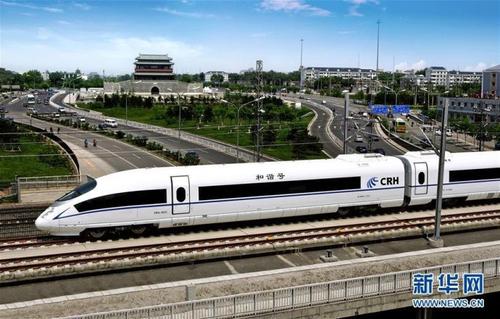


(Photo/Xinhua)
A total of 41 Chinese cities will have urban rail transit systems in operation by the end of this year, according to the China Association of Metros, Economic Daily reported on August 7.
China’s urban mass transit has undergone fast and steady development in under 30 years, as opposed to the transit systems in developed countries which have played out over the last 150 years, said Zhou Xiaoqin, executive vice president of the association, in a recent forum on urban mass transit held in Beijing.
By June 30, 197 lines existed in 37 cities, with an operation length totaling 6,126.82 km. This year, China will add another 1,070 km to its national urban rail lines, and the total length is expected to reach 6,800 km by the end of the year, Zhou said.
Upon completion, China will realize the goal of 6,000 km as outlined in the 13th Five-Year Plan ahead of schedule, he added.
“China’s urban mass transit has moved from high-speed growth to high-quality development,” said Zhou. He expects that mass transit systems will play a more important role in satisfying travel demands, improving the layout of cities, easing traffic congestion and promoting the economic and social development in the years to come.
China built its first urban rail line in Beijing in 1969. Over the past five decades, the urban rail transit industry has matured, with 16 cities in China establishing urban rail networks, according to the association.
In 2018, the urban rail transit system carried 21.07 billion passengers. Each year, about 400 to 500 billion yuan is invested in the industry, and 800 km is built and put into operation, the executive vice president introduced.
Speaking of the technological progress, Song Minhua, secretary-general of the association, said that a standard system on urban rail construction and operation management has emerged in China.
Furthermore, China has developed the Communications-Based Train Control (CBTC) signal system independently, only after Germany, France, and Canada.
Zhou mentioned that metros in the UK only cover about 400 km, far less than Beijing subways. However, European countries, including the UK, have been internationally recognized regarding the application of standards.
To realize high-quality development, China needs to enhance self-dependent innovations, and develop smart systems with digital and intelligent technologies, Zhou said.
 Fire brigade in Shanghai holds group wedding
Fire brigade in Shanghai holds group wedding Tourists enjoy ice sculptures in Datan Town, north China
Tourists enjoy ice sculptures in Datan Town, north China Sunset scenery of Dayan Pagoda in Xi'an
Sunset scenery of Dayan Pagoda in Xi'an Tourists have fun at scenic spot in Nanlong Town, NW China
Tourists have fun at scenic spot in Nanlong Town, NW China Harbin attracts tourists by making best use of ice in winter
Harbin attracts tourists by making best use of ice in winter In pics: FIS Alpine Ski Women's World Cup Slalom
In pics: FIS Alpine Ski Women's World Cup Slalom Black-necked cranes rest at reservoir in Lhunzhub County, Lhasa
Black-necked cranes rest at reservoir in Lhunzhub County, Lhasa China's FAST telescope will be available to foreign scientists in April
China's FAST telescope will be available to foreign scientists in April "She power" plays indispensable role in poverty alleviation
"She power" plays indispensable role in poverty alleviation Top 10 world news events of People's Daily in 2020
Top 10 world news events of People's Daily in 2020 Top 10 China news events of People's Daily in 2020
Top 10 China news events of People's Daily in 2020 Top 10 media buzzwords of 2020
Top 10 media buzzwords of 2020 Year-ender:10 major tourism stories of 2020
Year-ender:10 major tourism stories of 2020 No interference in Venezuelan issues
No interference in Venezuelan issues
 Biz prepares for trade spat
Biz prepares for trade spat
 Broadcasting Continent
Broadcasting Continent Australia wins Chinese CEOs as US loses
Australia wins Chinese CEOs as US loses